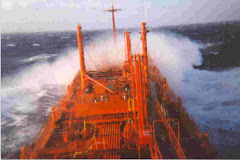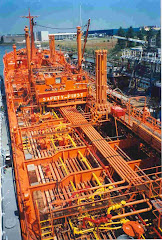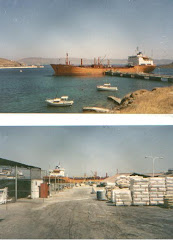Covid 19 is now in a second stage, destabilizing the major consuming economics - US and EU - and unleashing a major global economic crisis of the magnitude of the 2008 meltdown. It started in China and spread to other Asian countries in the first stage. China, Singapore and Korea seem to have managed successfully the initial health crisis and contained the contagion, so that people have returned to work, but the problem is that export demand is now under threat due the second stage where the virus has now led to lockdowns that have incapacitated large sectors of the US and EU economies,
In the meantime, a price war has broken out between Saudia Arabia and Russian and oil prices have fallen dramatically. These low prices threaten the US shale oil industry and many lead to more woe in the offshore sector that was showing first signs of some recovery after a prolonged slump for several years now.
We can make the following observations:
- The best case recovery scenario is a U-shaped global recovery in the 2nd half of 2020 but lots of output destruction in the 1st half. Hopefully better years in 2021 and 2022.
- Scrubbers that seemed a major success story in January this year are now rendered problematic with the low oil prices and very small prevailing spread between LSFO and HSFO.
- The impact on this situation on shipping varies with the sector:
Containerships were badly affected by the factory shutdowns in China, now with the factories coming on stream they face the second wave that is reducing import demand in the US and EU. Liner companies will face a new bout of financial stress with the weaker liner companies again in jeopard with serious cashflow problems. Likewise, third party vessel provider companies that have legacy debt problems.
Drybulk started the year with very low rates. The Capesize sector was very badly hit and still suffers. There has been some recovery for the other sizes, but mixed.
Tankers are experiencing a boom market with the low oil prices, but the first surge in rates has now abated, albeit rates are still very profitable levels. Both crude and products trades are currently profitable. The contango price curve favors liquid storage. With a looming recession, a lot of crude oil and oil products will go into storage. Reduced oil demand from a prolonged economic slump would jeopardize the current profitability of the sector.
The severity of this major global recession depends heavily on the ability of governments to contain the virus and get people back to work to restore normalcy. The most successful cases seem to be Singapore and Korea in this regard. Whether the US or EU can replicate this success remains to be seen.
The US government is particularly concerned about the need to restart their economy and get people back to work but they are just in initial stages in dealing with the health problems. The EU is struggling over reflation mechanisms that are lacking in the Eurozone. The health crisis in Italy and Spain is still out of control.
The US government is particularly concerned about the need to restart their economy and get people back to work but they are just in initial stages in dealing with the health problems. The EU is struggling over reflation mechanisms that are lacking in the Eurozone. The health crisis in Italy and Spain is still out of control.








